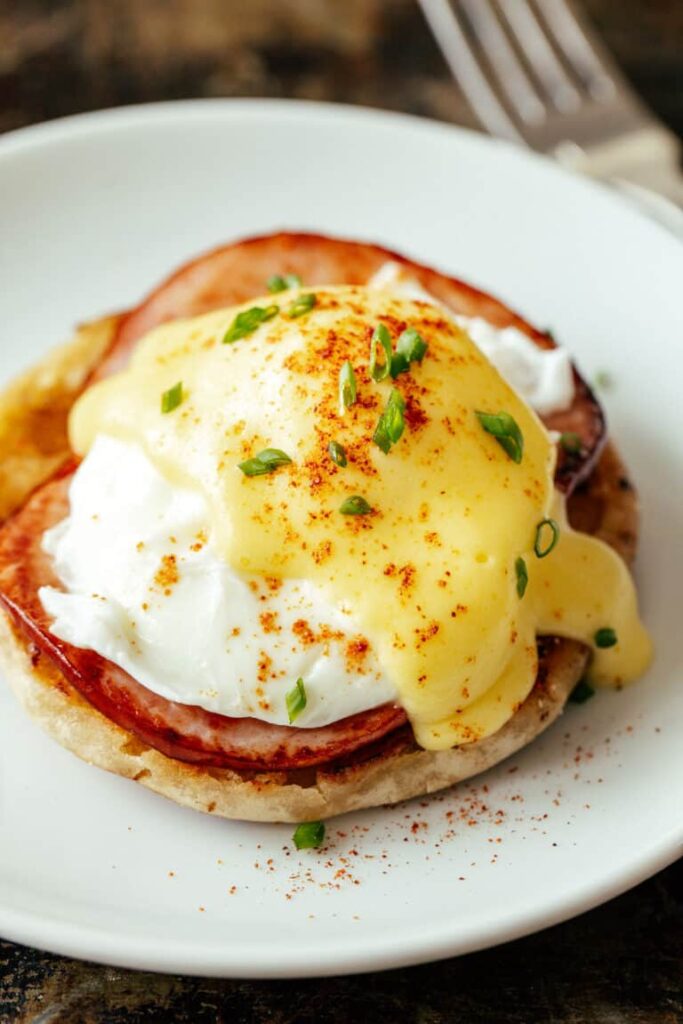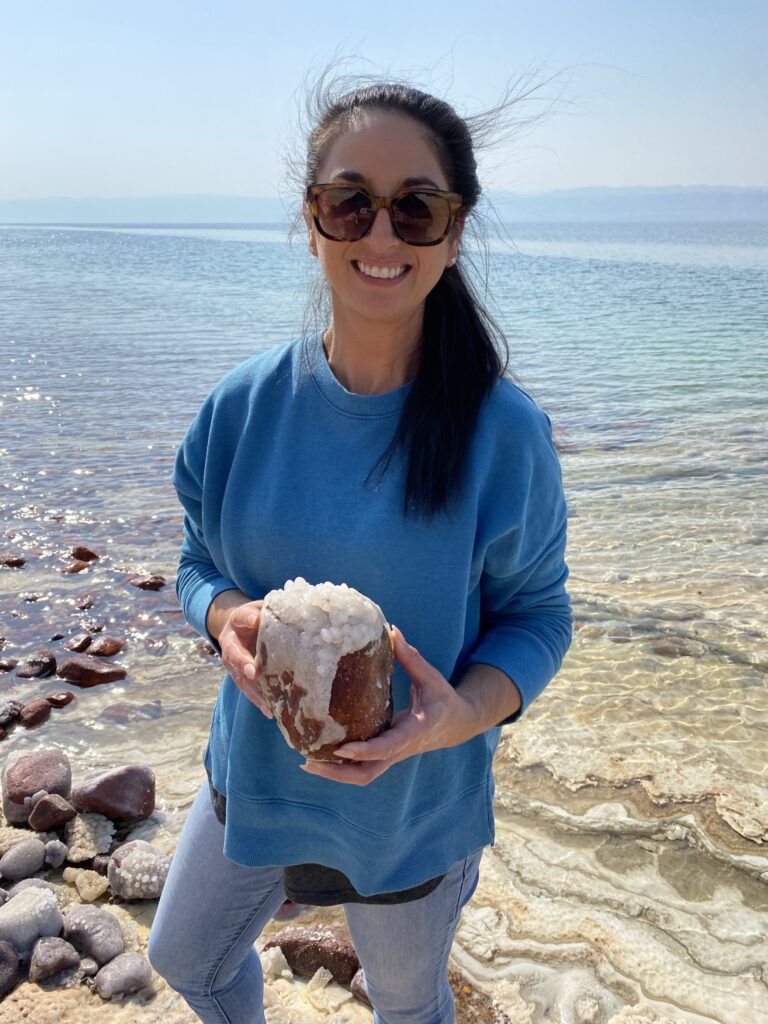An essential brunch staple that can be dressed up or dressed down for any occasion. This classic dish is one of my favorite dishes not only to eat at my local cafe but it's my favorite dish to make on any special occasion...or really any lazy Saturday or Sunday when I have nowhere to be. You can make this just as it is, or you can take it to another level by adding lump crab or asparagus.
With just a blender and a pot of simmering water, you can create this restaurant quality meal in your home and I promise you will never NOT love how easy this is to make.
Origins of Eggs Benedict
Eggs Benedict originated in the mid-1800s in New York City, specifically in the kitchen of the iconic steakhouse Delmonico’s. This well knows breakfast dish is named after Wall Street stockbroker Lemuel Benedict, who ordered the dish one morning to cure a hangover. These days, it’s still a popular meal to recover from a late night. Though you’ll find all kinds of variations, including lobster, smoked salmon, and crab, the traditional eggs Benedict recipe features just-poached eggs and fried Canadian bacon over a toasted English muffin draped in a generous blanket of creamy hollandaise sauce.
How To Make Eggs Benedict
INGREDIENTS
• Eggs: Eggs are used twice in this recipe: I use four large egg yolks to make the hollandaise, and eight to make the poached eggs.
• Lemon Juice: Fresh lemon juice is an absolute must to create a bright and zingy hollandaise sauce.
• Butter: To create a creamy hollandaise, melted butter is added to the egg yolk and lemon juice mixture. Since the canadian bacon is a lean meat, I like use avocado oil or butter to cook my Canadian bacon and English muffins in.
• Canadian Bacon: Crispy Canadian bacon is not only an essential aspect of eggs Benedict, but it’s also my favorite part of this classic breakfast. Not a fan? While it won’t be a classic benny, you can swap it out for another protein like crispy bacon.
• English Muffins: Toasted English muffins provide a light, chewy base to the eggs Benedict. Use your favorite brand, or go the extra mile and make homemade English muffins.
• Chives: While freshly chopped chives aren’t a requirement for this recipe, they add a freshness that I love, and makes these even more stunning.
STEP-BY-STEP INSTRUCTIONS
The key to the best eggs Benedict is all in the hollandaise. If you’ve always been intimidated by making your own, never fear: I have perfected the easiest, simplest way to make creamy, dreamy hollandaise. My secret? Using a regular blender! You can also use an immersion blender if you have one! If you’re using an immersion blender, you’re going to want to select a tall cup to blend your ingredients in. Make sure the bottom is around the same circumference as your immersion blender. Blend together the egg yolks, lemon juice, salt, and a bit of water until frothy.
Next, melt butter and add to your cup mixture, blending until the mixture is fluffy, airy, and creamy. That’s it! An uncomplicated way to make perfect hollandaise that leaves your forearms still intact.
Next, we’re moving on to poaching our eggs. Choose a skillet or saucepan with high sides, and add about 2” of water. My favorite hack for poaching eggs is to crack the eggs into a small bowl first, then gently lower into the water. This will create a uniform poached egg and will eliminate any eggshells in your water. Before you drop the egg into the pan, use your spoon to create a whirlpool into the pan—this will create enough force to bring the egg whites together in one cohesive ball instead of going all over the pan. Slide your egg into the center of the whirlpool, then cook until the whites are set, but the yolk is soft and jiggly. Use a slotted spoon to add to a paper towel-lined plate to remove excess water.
Now, it’s on to my favorite part: Crisping up the Canadian bacon. Cook until it crisps up, and you can see some color on both sides.
Set the Canadian bacon aside: It’s time to move on to the English muffin. While you can use a regular ol’ toaster, I love to cook my English muffins by toasting them in the same pan I cooked my Canadian bacon in. Toasting them in the leftover fat and butter gives a flavor upgrade to the classic muffin.
Now, it’s time to assemble. Layer your Canadian bacon and poached egg on top of your English muffin, drizzle with the hollandaise, then top with chopped chives.
The full list of ingredients & instructions can be found in the recipe below.
Recipe Tips
• Should I add vinegar? You don't have to, but I have found that it helps make the egg white bind to the yolk to create a nice poached egg shape.
• Do I need a blender? No blender? No worries, you can also make an impressive hollandaise sauce using old-fashioned elbow grease and a good whisk.
• The key to making creamy hollandaise. The trick to making luscious, silky hollandaise that holds together is to blend it thoroughly and to not add the melted butter too quickly. When you’re ready to add the melted butter, take your time. Add the butter in a slow, thin, even drizzle as you continue to run the blender. Once all of your butter is in, you can turn off the motor and taste your sauce. It should be creamy, fluffy, and uniform.






